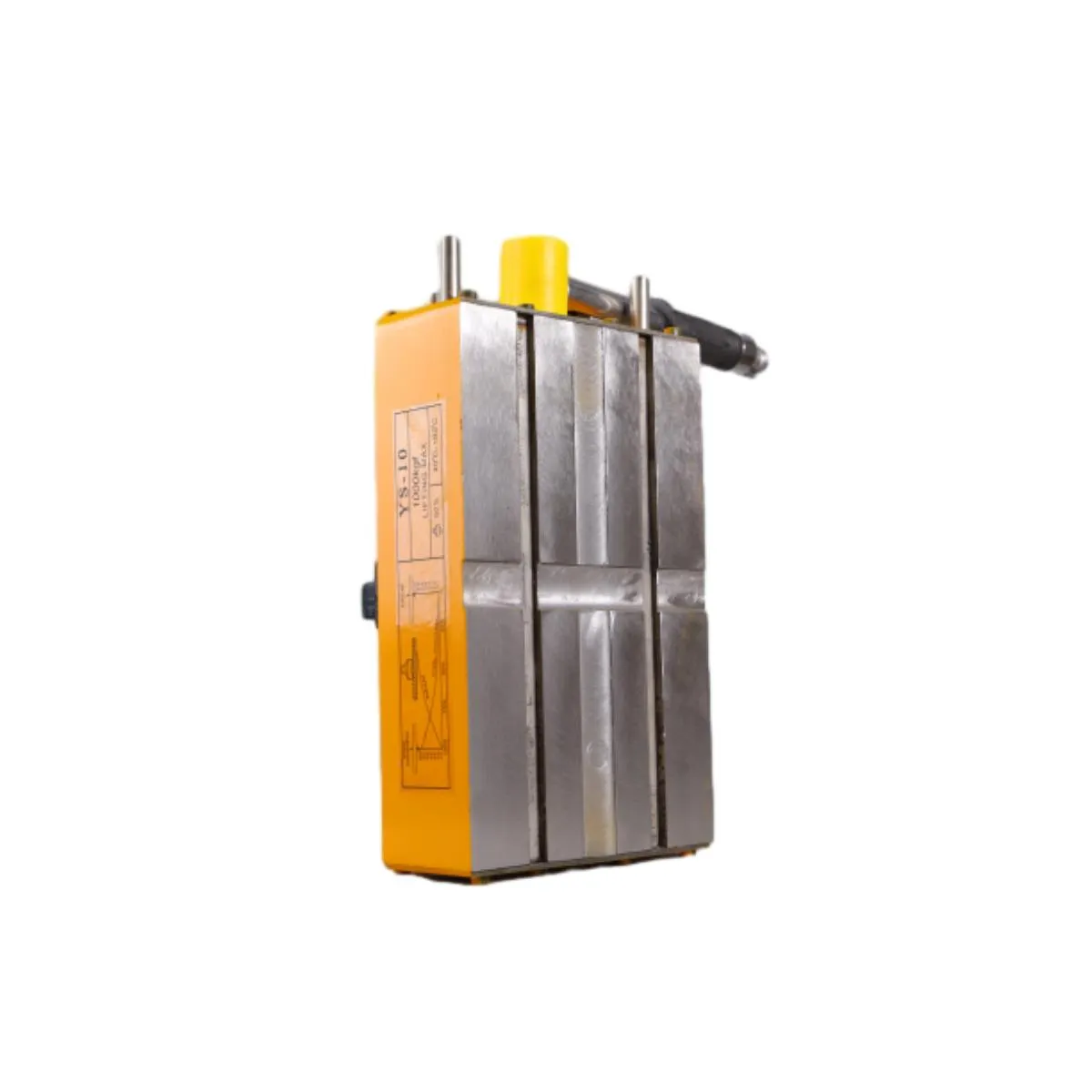steel lifting magnets
The Utility and Mechanics of Steel Lifting Magnets
In the realm of material handling, steel lifting magnets have emerged as indispensable tools that significantly improve efficiency and safety. These devices utilize electromagnetic force to lift and transport heavy steel objects, making them invaluable in industries such as construction, manufacturing, and recycling. Understanding the functionality, applications, and benefits of steel lifting magnets is crucial for both businesses and workers involved in heavy-duty material handling.
How Steel Lifting Magnets Work
Steel lifting magnets operate on an electromagnetic principle. When electric current passes through a coil of wire, it generates a magnetic field. This electromagnetic force is strong enough to lift hefty steel parts, such as sheets, blocks, and pipes, with minimal effort. The strength of the magnet can be adjusted by varying the voltage supplied. When the current is turned off, the magnetic field collapses, releasing the steel object safely.
The design of these magnets typically includes a steel casing covering the coil, enhancing the magnetic hold by directing the magnetic field towards the surface of the steel object. Some advanced models can even be equipped with safety features such as indicators that signal the magnet's operating status, ensuring that operators are always aware of its activation.
Applications of Steel Lifting Magnets
Steel lifting magnets find application across various sectors. In manufacturing, they are commonly used to lift and position metal sheets in CNC machines and other production lines, streamlining the workflow and enhancing productivity. In construction, they facilitate the movement of steel beams and other components, reducing the need for manual labor and minimizing the risk of injury.
steel lifting magnets

In the recycling industry, steel lifting magnets play a vital role in sorting through mixed materials
. They effortlessly separate ferrous metals from non-ferrous ones, making the recycling process more efficient. Additionally, they are essential in shipping and storage facilities, where they aid in the stacking and handling of heavy metal items, thus improving warehouse organization and safety.Benefits of Using Steel Lifting Magnets
One of the primary advantages of employing steel lifting magnets is the significant reduction in labor costs. By mechanizing the process of lifting and moving heavy steel objects, businesses can minimize the number of workers needed for these tasks, thereby saving on labor expenses. Furthermore, the use of magnets reduces the likelihood of workplace accidents associated with manual handling, ultimately contributing to a safer work environment.
Another benefit is the increase in productivity. Magnets can lift heavy steel items much faster than human labor can, allowing for quicker turnaround times in manufacturing and construction projects. This efficiency leads to enhanced operational output, allowing businesses to meet tight deadlines and customer demands more effectively.
Moreover, steel lifting magnets are versatile and can be used in various environments. They can operate effectively whether in an indoor manufacturing plant or an outdoor construction site, making them a practical solution for diverse material handling tasks. Their robust construction and minimal maintenance requirements also ensure longevity, providing a reliable investment for companies involved in heavy lifting tasks.
Conclusion
In conclusion, steel lifting magnets are essential tools in the modern industrial landscape. Their ability to effortlessly lift and transport heavy metal objects transforms how materials are handled across various sectors. With their advantages in safety, efficiency, and productivity, steel lifting magnets are not only changing the dynamics of material handling but also setting the stage for future innovations in technology and industry practices. As industries continue to evolve, the importance of these magnetic tools is likely to grow, paving the way for even more efficient and safer methods of working with heavy materials.
-
Unlock Seamless Relocation with Our Heavy Equipment Moving ExpertiseNewsJun.06,2025
-
Unleash Unrivaled Flexibility with Our Adjustable Gantry CraneNewsJun.06,2025
-
Unleash Heavy-Duty Efficiency with Our Industrial Gantry Crane SolutionsNewsJun.06,2025
-
Revolutionize Steel Handling with Our Magnetic Lifter RangeNewsJun.06,2025
-
Master Equipment Mobility with Premium Machinery Mover SolutionsNewsJun.06,2025
-
Elevate Your Material Handling with Magnetic Lifter TechnologyNewsJun.06,2025
-
YS Permanent Lifting Magnets: The Smarter Way to Handle SteelNewsMay.22,2025
